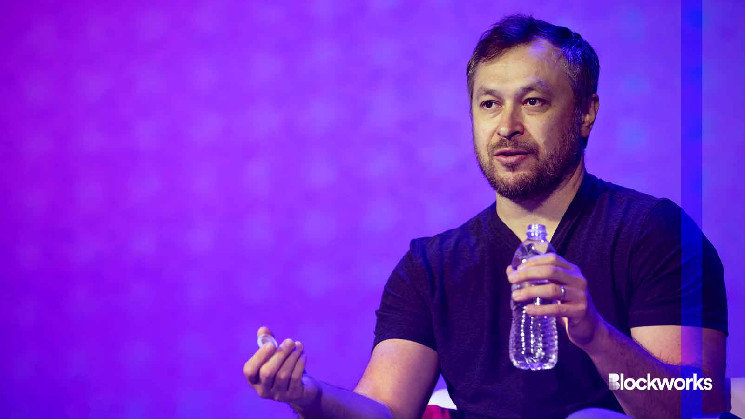As blockchains scale, the cost of transactions and blockspace falls. The 2022-2023 bear market has been characterized by a continuous build out of infrastructure, to lay the groundwork for future growth.
Yet arguments about the best way to scale abound, they often fall into one of two camps.
One is “modular,” with its standard-bearers Ethereum and Cosmos. The other is “monolithic” which has come to be dominated in the crypto zeitgeist by Solana — although they prefer the term “integrated.”
An essay published Friday by pseudonymous Ethereum advocate Polynya critiquing monolithic blockchains, while not mentioning it by name, has been interpreted by many as a veiled critique of Solana.
The critique comes against a backdrop of swelling interest in the network spurred by a significant price surge in Solana’s native crypto asset (SOL), which is up 140% in the past month with a market cap approaching $25 billion.
While often praised for its high transaction speed and low fees, Solana has faced criticism in the past for network instability, including outright outages, and high hardware requirements to operate validating nodes.
Responding to perceived shortcomings, Anatoly Yakovenko, co-founder of Solana, has acknowledged some network flaws, but contends the Solana community has worked diligently to mitigate them.
Yakovenko views these challenges as part of the network’s growth, likening them to historical issues faced by other major networks like Ethereum and Bitcoin.
Plans include the mid-2024 launch of Firedancer, the first independent validator client software for Solana (Ethereum has 5), which is expected to increase throughput to as much as a million transactions per second (TPS) in the future.
Yakovenko, responding to Polynya’s specific critique, argued the natural growth in computing power coupled with falling costs as hardware becomes commoditized will handle Solana’s needs with aplomb.
You can literally ask google these days to do all the math for you.
(1gbps * 1 year * $0.64/terabyte * 100,000 boxes)/(1000 user txs per second * seconds per year) = $0.008
That is less than 1 biden cent per user transation to cover the cost of a 1gbps sustained load on 100k… https://t.co/ffnGFa7Ucz
— toly 🇺🇸 (@aeyakovenko) November 17, 2023
Polynya’s essay also advocates for advanced technologies like validity proofs and data availability sampling to address scaling demands, predicting “every single monolithic blockchain seeking scale will upgrade to tech like validity proofs and data availability sampling or be risk [obsolescence].”
Solana developer Mert Mumtaz, CEO at Helius and co-host of Blockworks’ Lightspeed podcast, responded that Solana could embrace both vertical and horizontal scaling.
I think you have some good points here which are worth having discourse on — but the solutions you propose seem to be in contradiction to the problem that you wish to solve
you’re not really mentioning the negative tradeoffs of your approach here either right? as Toly said,…
— mert | helius.dev (@0xMert_) November 17, 2023
Polynya further lamented the crypto industry’s disproportionate focus on infrastructure over user onboarding — and a dearth of applications with product-market fit — which Mumtaz derided as the pot calling the kettle black.
> The overwhelming bottleneck has been applications and user onboarding for more than a couple of years now, and with each passing day the gap between demand and supply becomes larger
doesn’t this contradict the entire post?
L2s and bridging have proven to be tremendously poor…
— mert | helius.dev (@0xMert_) November 17, 2023
Endgame
Ultimately, this dispute revolves around the question of what is the modus operandi of using a blockchain?
“The whole point of a public blockchain is lost if you are not resistant for the worst-case scenarios,” Polynya wrote. “[10,000 nodes] is not enough, and we should strive to have 100,000 nodes in different types of places across the world. We need nodes at homes, schools, government offices — in large cities, in villages, in Chile, in Papua New Guinea, and eventually in space.”
Solana currently has between 2,000 and 3,000 nodes.
“It’s perfectly fine to have a monolithic blockchain today, the technology to push past its crippling limitations did not exist 5 years ago,” Polynya concludes, with the caveat that the industry will “inevitably converge” on a design using validity proofs and data availability sampling.
“This is the only currently known way for the blockchain world to achieve our endgame of global scale, all verified on our mobile phones.”



